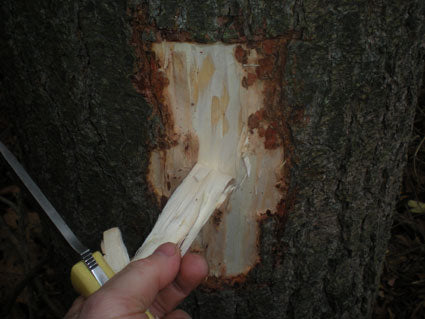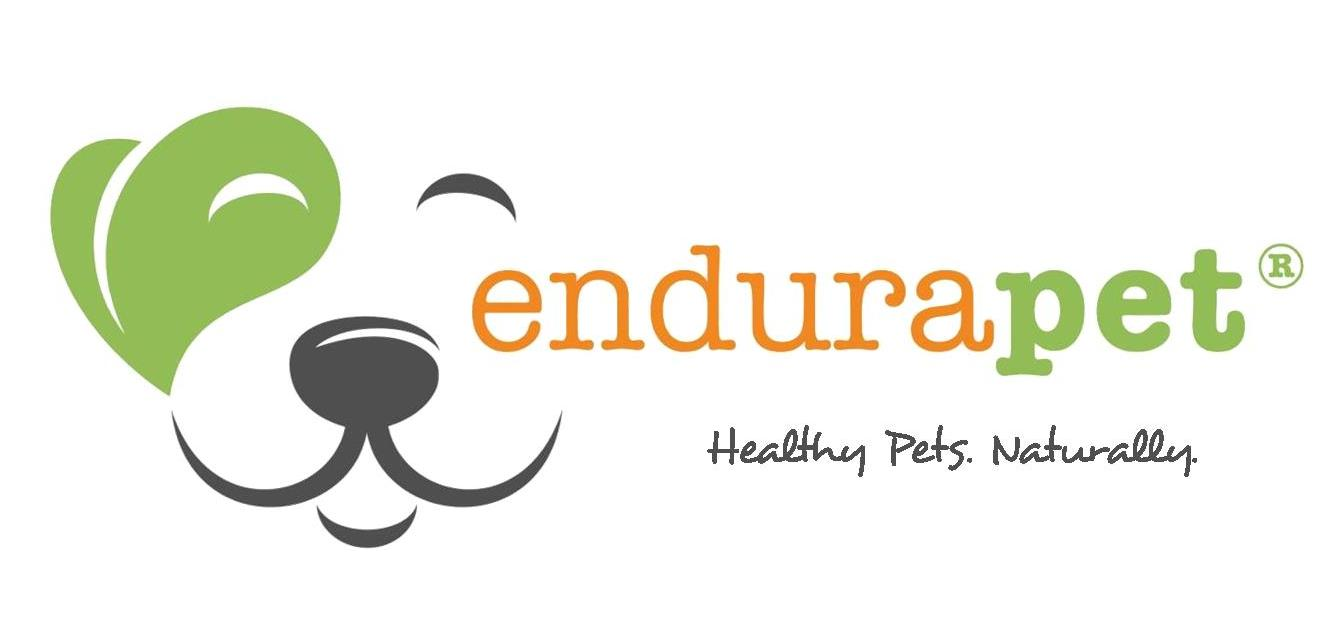(Heath Benefits / History / Additional Info / Endurapet & Pine Bark / Further Reading / References)

photo courtesy of tacticalintelligence.net
Pine bark extract is amazing. Period. It is not only beneficial to humans, but it can drastically benefit dogs and cats of all ages. Pine bark extract can help fight inflammation (arthritis, hip dysplasia and the effects of aging), and it has been shown to improve circulation, immune response, and more. According to their guardians, agility dogs are thriving on it, and senior pets can find relief from the pain and inflammation symptoms of a variety of age related conditions. Pine bark extract has been used by humans in various forms for centuries, and now it is helping dogs and cats in a big way. No matter the age or breed, pine bark extract can be a powerful tool for the well being of your beloved and deserving dogs and cats. To learn all about the benefits of pine bark extract for dogs and cats (and people, too!), read on:
Antioxidant & Anti-inflammatory Effects
Pine Bark Extract protects cells against free radicals, or oxidants. When free radicals react with cells and the DNA they contain, the cells may become compromised, functioning improperly or dying, resulting in numerous health problems, including a weakened immune system. Antioxidants are believed to slow aging and help in preventing chronic illness, including cardiovascular disorders such as heart disease and stroke, inflammatory issues such as arthritis, and neurological disorders such as Parkinson’s and Alzheimer’s. Pine Bark Extract scavenges reactive oxygen and nitrogen radicals, and suppresses production of peroxides in the body.
In the Circulatory System
Pine Bark Extract reduces the permeability and fragility of blood vessels by binding to the collagen in the vessel walls, improving their strength and elasticity. Circulation is enhanced, and blood pressure is reduced. Pine Bark Extract also aids in the production of nitric oxide (NO), a blood gas that enhances blood vessel dilation, increasing blood flow and oxygen supply. Additionally, it lowers LDL cholesterol levels, and reduces platelet aggregation.
Antiviral Properties
Pine Bark Extract also exhibits an antiviral/antimicrobial effect; when applied topically, rate of healing is increases, and scar formation is decreased. This property was likely quite useful to ancient peoples, and is now of benefit in treating viral myocarditis and ulcers.
What conditions may benefit from it?
A) Feline / Canine Arthritis - and other inflammation/mobility issues
B) Feline/ Canine Cancer - and related health issues
C) Feline / Canine Cardiovascular Issues - incl. Coronary Artery Disease
D) Feline / Canine Diabetes - and related issues, Metabolic Disorder
E) Feline / Canine Stroke Victims - and Alzheimer’s, related Dementia
F) Feline / Canine Venous Insufficiency - edema (blood clots), swelling
G) Feline / Canine Health Maintenance - useful in promoting general health
Links to References Below:
A) 1, 5, 13 E) 20, 27
B) 6, 17, 26 F) 2, 4, 7, 9, 11, 12, 18, 24
C) 14, 16, 21, 22, 31 G) 4, 14, 15, 17, 20, 23, 25, 26
D) 3, 10, 19, 28, 29, 31
The HISTORY of PINE BARK
Ancient Chinese herbalists employed pine bark as an anti-inflammatory, used to treat arthritis. Hippocrates briefly mentions its use, in the fourth century, as does Zurich pharmacist Hans Minner, in the Middle Ages, both referring to pine bark as an ingredient in topical wound treatment. European folk medicine has long employed pine bark as a treatment for scurvy. Native Americans used pine bark as food, and as a remedy for inflamed wounds and ulcers. The Iroquois confederacy frequently warred with the nearby Algonquians, and referred to them derogatorily as ‘Adirondacks’, literally, “bark eaters”, for their habit of using pine bark as a nutritional resource! This bit of rival name-calling has entered the common lexicon, attached to the Adirondack Mountain area of upstate New York, as well as a particular style of rustic wooden chair, created and manufactured in the area!
During the winter of 1535, the French explorer Jacques Cartier, credited with claiming what is now Canada for France, had a fortunate encounter with pine bark. Ice-bound while exploring and mapping the St. Lawrence River, near modern Quebec, his crew developed scurvy, such that, "out of 110 that we were, not ten were well enough to help the others, a pitiful thing to see". Accounts differ as to the specifics, but Cartier’s crew was saved by the advice of a Native American, who instructed them to brew a tea from pine bark and pine needles. Their guide referred to the tree as “Annedda”, and Cartier called it, “l’arbre de vie”, the “tree of life”, for its curative properties.
In 1732, Carl Linnaeus, considered one of the fathers of modern botany, reported that the Sami people of Northern Europe would hang strips of “fir bark” (Scotch pine) to dry in their barns. If food stores were plentiful, the bark would be fed to their dogs and livestock, but if necessary, they would grind the bark into meal, and use it to bake ‘famine bread’. Bark bread is still found in Finnish cuisine, and elsewhere in Europe.
In 1951, Dr. Jacques Masquelier, a French chemist, is reported to have read Jacques Cartier’s account of the “scurvy and pine bark” incident, and began examining several sources to identify the bioactive constituents, eventually leading to the extraction of a type of phytochemicals named proanthocyanidins from the bark of the Maritime Pine, a conifer native to Western Europe, found in Portugal, Spain, France, Morocco, and Italy. Masquelier patented his process, naming the compound ‘Pycnogenol.’
ADDITIONAL INFORMATION
Pine Bark Extract is known by several names; the scientific name of the maritime pine, Pinus Pinaster, the bioactive components which are present in the extract; oligomeric proanthocyanidin complexes (OPCs), proanthocyanidin oligomers (PCOs), condensed tannins, pygenol, etc, and is marketed under the Registered brand name Pycogenol.
OPCs and PCOs are among the simplest flavanols, more complex polyphenols are known as tannins. Pine Bark has a very high concentration of OPCs; 80-85%, which are also found in apples, berries, chocolate, rhubarb, and other natural sources.
Drug Interactions
- potent antioxidant effect may interfere with the action of anthracyclines, platinum compounds, and alkylating agents
- immunostimulant effect may antagonize the effects of immunosuppressants
- Pine bark extract can inhibit platelet aggregation and may increase risk of bleeding when used with anticoagulant and/or antiplatelet drugs
Of course, even the best pet supplements must be used responsibly - when considering any supplement, medication, or diet change, always consult your health care professional!
ENDURAPET AND PINE BARK EXTRACT
Here at Endurapet we feel very strongly about the ingredients we choose to include in our formulas, and given the benefits of Pine Bark Extract, it has been included in both our Immune Support and Mobility Plus supplements. We use only human-grade Pine Bark Extract, produced in an FDA approved facility. All Endurapet products are formulated for effective dosages and proper absorption.
FURTHER READING
Pharmaceutical and nutraceutical effects of Pinus pinaster bark extract, by S. Iravani and B. Zolfaghari, PhD
Excellent summary of data on Pycnogenol ®; usages, dosages, and paired medical research from the Ferrell-Duncan Clinic
Just in case you’d ever need to eat a pine tree …or are wondering about the scars on that old pine…
REFERENCES
- Araghi-Niknam M, Hosseini S, Larson D, Rohdewald P, Watson RR. Pine bark extract reduces platelet aggregation. Integr Med. 2000;2:73-77.
- Arcangeli, P. Pycnogenol in chronic venous insufficiency. Fitoterapia 2000;71(3):236-44
- Belcaro G, Cesarone MR, Errichi BM, et al. Diabetic ulcers: microcirculatory improvement and faster healing with pycnogenol. Clin Appl Thromb Hemost 2006;12:318-23.
- Belcaro G, Cesarone MR, Errichi BM, et al. Venous ulcers: microcirculatory improvement and faster healing with local use of Pycnogenol. Angiology 2005;56:699-705.
- Belcaro G, Cesarone MR, Errichi S, et al. Treatment of osteoarthritis with Pycnogenol. The SVOS (San Valentino Osteo-arthrosis Study). Evaluation of signs, symptoms, physical performance and vascular aspects. Phytother Res 2008;22:518-23.
- Belcaro G, Cesarone MR, Genovesi D, et al. Pycnogenol may alleviate adverse effects in oncologic treatment. Panminerva Med. 2008 Sep;50(3):227-34.
- Belcaro G, Cesarone MR, Rohdewald P, et al. Prevention of venous thrombosis and thrombophlebitis in long-haul flights with pycnogenol. Clin Appl Thromb Hemost 2004;10:373-7.
- Blazsó G1, Gábor M, Schönlau F, Rohdewald P. Pycnogenol accelerates wound healing and reduces scar formation. Phytother Res. 2004;18:579-81.
- Cesarone MR, Belcaro G, Rohdewald P, et al. Comparison of Pycnogenol and Daflon in treating chronic venous insufficiency: a prospective, controlled study. Clin Appl Thromb Hemost 2006;12:205-12.
- Cesarone MR, Belcaro G, Rohdewald P, et al. Improvement of diabetic microangiopathy with pycnogenol: A prospective, controlled study. Angiology 2006;57:431-6.
- Cesarone MR, Belcaro G, Rohdewald P, et al. Prevention of edema in long flights with Pycnogenol. Clin Appl Thromb Hemost. 2005;11:289-294.
- Cesarone MR, Belcaro G, Rohdewald P, et al. Rapid relief of signs/symptoms in chronic venous microangiopathy with pycnogenol: a prospective, controlled study. Angiology 2006;57:569-76.
- Cisár P, Jány R, Waczulíková I, et al. Effect of pine bark extract (Pycnogenol) on symptoms of knee osteoarthritis. Phytother Res 2008;22:1087-92.
- Devaraj S, Vega-López S, Kaul N, et al. Supplementation with a pine bark extract rich in polyphenols increase plasma antioxidant capacity and alters the plasma lipoprotein profile. Lipids. 2002;37:931-934.
- Durzan D. Arginine, scurvy and Cartier's "tree of life". J Ethnobiol Ethnomed. 2009; 5: 5.
- Enseleit F, Sudano I, Périat D, Winnik S, et al. Effects of Pycnogenol on endothelial function in patients with stable coronary artery disease: a double-blind, randomized, placebo-controlled, cross-over study. Eur Heart J. 2012 Jul;33(13):1589-97.
- Iravani S1, Zolfaghari B. Pharmaceutical and nutraceutical effects of Pinus pinaster bark extract. Res Pharm Sci. 2011 Jan;6(1):1-11.
- Koch R. Comparative study of Venostasin and Pycnogenol in chronic venous insufficiency. Phytother Res 2002;16:S1-5.
- Liu X, Wei J, Tan F, et al. Antidiabetic effect of Pycnogenol French maritime pine bark extract in patients with diabetes type II. Life Sci 2004;75:2505-13.
- Luzzi R, Belcaro G, Zulli C, et al. Pycnogenol® supplementation improves cognitive function, attention and mental performance in students. Panminerva Med. 2011 Sep;53(3 Suppl 1):75-82.
- Matsumori A, Higuchi H, Shimada M. French maritime pine bark extract inhibits viral replication and prevents development of viral myocarditis. J Card Fail. Nov 2007;13(9):785-791.
- Nishioka K, Hidaka T, Nakamura S, et al. Pycnogenol, French maritime pine bark extract, augments endothelium-dependent vasodilation in humans. Hypertens Res. 2007;30(9):775-780.
- Packer L, Rimbach G, Virgili F. Antioxidant activity and biologic properties of a procyanidin-rich extract from pine (Pinus maritima) bark, pycnogenol. Free Radic Biol Med 1999;27:704-24
- Petrassi C, Mastromarino A, Spartera C. Pycnogenol in chronic venous insufficiency. Phytomedicine. 2000;7:383-388.
- Rohdewald P, Beil W. In vitro inhibition of Helicobacter pylori growth and adherence to gastric mucosal cells by Pycnogenol. Phytother Res. 2008;22:685-688.
- Rohdewald P. A review of the French maritime pine bark extract (Pycnogenol), a herbal medication with a diverse clinical pharmacology. Int J Clin Pharmacol Ther 2002;40:158-68..
- Ryan J, Croft K, Mori T, et al. An examination of the effects of the antioxidant Pycnogenol on cognitive performance, serum lipid profile, endocrinological and oxidative stress biomarkers in an elderly population. J Psychopharmacol 2008;22:553-62.
- Schönlau F, Rohdewald P. Pycnogenol for diabetic retinopathy. A review. Int Ophthalmol. 2001;24(3):161-71.
- Steigerwalt R, Belcaro G, Cesarone MR, et al. Pycnogenol improves microcirculation, retinal edema, and visual acuity in early diabetic retinopathy. J Ocul Pharmacol Ther 2009;25:537-40.
- Torras MA, Faura CA, Schönlau F, Rohdewald P. Antimicrobial activity of Pycnogenol. Phytother Res. 2005;19:647-8.
- Zibadi S, Rohdewald PJ, Park D, Watson RR. Reduction of cardiovascular risk factors in subjects with type 2 diabetes by Pycnogenol supplementation. Nutr Res 2008;28:315-20.

1 comment
I have been looking at using pine bark from pinebark.com for my 16 year old cat and this is comforting news to read. I certainly want to keep her around as long as I can!